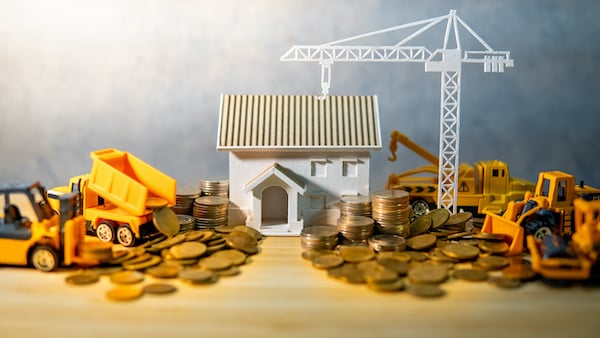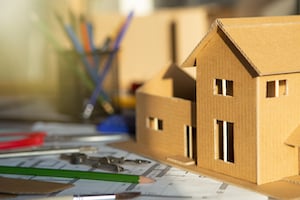Real Estate Development Crash Course: The Development Process in 7-Minutes
7-minutes isn't enough to discuss the entire development process.
This video is meant to serve only as a crash course - highlighting the 4 broad phases of development and a couple of key tasks you need to consider during each phase.
Guide to the video
- The real estate development process is comprised of 4 broad phases - Site selection, pre-development, development & construction, and post-construction
- Development tasks need to be properly sequenced to save time and eliminate unnecessary expenses
- For a deeper dive into development - check out our 65-page comprehensive "Development Made Simple" guide
Video transcript follows
You ever wonder how a piece of dirt goes from raw land and evolves into a finished product? Well probably, since you’re watching this video, or else you wouldn’t have clicked on it.
Real estate development is a complex and time-consuming process. And many times, business owners and investors are left to their own devices – fumbling through the process, resulting in lost time, and wasted money.
Over the next 7 minutes, we’ll give you a crash course on real estate development and highlight exactly what you need to know to get you started on your first project.
Hey everyone – it’s Matt Marsh with Marsh & Partners.
Marsh & Partners is a development and national consulting firm that helps business owners and investors maximize their real estate and transform their businesses.
----------
Now, before we dive into the nuances of real estate development, I want to break down the process into 4 broad, sequential phases, which are:
- Site selection & land acquisition
- Pre-development
- Development & construction
- Post-construction/project closeout or operations and ongoing management
Those 4 phases will serve as the basis for everything we discuss in this video today - as we examine some of the specific steps you need to consider when developing a property.
And after this video, you’ll have a much better understanding of the development process, and what you as a developer need to consider before undertaking a project.
Phase 1: Site Selection/Land Acquisition
The old adage, “a successful real estate development begins with the right site,” couldn’t be truer. The site selection process lays the foundation for all your subsequent development tasks and can really set a project up for either success or failure right from the start.
This phase of a project consists of mainly initial research, project due diligence, and an initial assessment of the feasibility of a project.
That all begins by determining what your goals are. What do you hope to achieve with a project? Because only once you know where you’re headed can you begin to determine how you’re getting there.
Preliminary due diligence is also critical to this phase of development. Selecting the right site is a complicated process, and missteps during site selection often lead to budget and time overruns.
When you’re investigating a site, you’ll want to answer a couple of questions:
- Does the zoning support my proposed use?
- Is the site large enough to support my proposed building?
- Are there major site work, topographical or environmental issues?
- Does the site have access to utilities?
This isn’t an exhaustive list, but it will get you started. Ask us about our comprehensive site selection checklist if you’re interested in learning more.
Once you’ve investigated a site, you can begin to build your preliminary development budget and start assessing the capital market and development financing options for your project.
Phase 2: Pre-development
The second phase of a real estate development project is pre-development. After you’ve selected a site and have control of a property, you can begin pre-development.
The pre-development phase focuses on the key details and planning of the project – things like architectural design and planning, and assembling the right development team to set your project up for success.
During this phase, the first step you’ll want to take is hiring the right civil engineer. Your civil engineer will help you navigate critical site evaluation requirements and circumvent cumbersome municipal ordinances.
Land entitlement steps are critical to pre-development. In order to actually break ground on a project, you’ll need utility, landscape, and road approvals. If your project needs to be rezoned, or the property needs to recombined or subdivided, those steps would also have to take place before you can begin construction.
And after all that, you’re still not done. Building plans need to be reviewed and permits issued – signaling that the project is approved to begin construction.
You’ll want to finalize your project’s capital stack and lock in any debt or equity financing during this phase as well to make sure you’re fully funded through development and construction.
Phase 3: Development & Construction
Once you’ve navigated necessary land entitlement tasks and you have all your permits and municipal approvals, the fun part begins.
The 3rd phase of a real estate development project involves the actual vertical construction of a property.
It begins with earthwork – grading and prepping the site for construction. Then utilities are laid and installed followed by the construction of a building pad and eventual external building construction.
Depending on the type of building and construction technique you’re using, building construction could involve framing, pouring and raising tilt-up panels, or various other methods.
Building construction is usually completed to a “cold dark shell” condition before any interior buildout is completed. Interior buildout includes flooring and ceiling work, lighting and electrical, and all plumbing, HVAC and any fixtures.
Phase 4: Post-construction/Closeout or Operation & Management
After construction is complete the building is ready to move into, right? Not so fast.
A series of final construction inspections are required before you receive your certificate of occupancy (or CO). The CO certifies that a property complies with applicable building codes and municipal ordinances.
Now, depending on your project exit strategy, the final phase of development can look very different.
Some developers look to sell a property as quickly as they can, regardless of occupancy.
Others plan on owning and managing the property long-term. And if that’s your goal, your post-construction focus will be on leasing the property up and stabilizing the asset.
Once a property is stabilized, it’s common that construction loans are refinanced into a more favorable long-term financing arrangement.
----------
Phew - so that was a lot of info in a short time. I understand this was a crash course in real estate development.
You can reach out to me directly if you have questions or want to discuss anything in greater detail.
I’ve also dropped a link in the video description to our new “Real Estate Development Made Simple Guide” that covers everything I discussed in this video and much more in an easy-to-read, 65-page comprehensive guide to development.
If you enjoyed the video hit the like button and subscribe to our channel below, follow us on Instagram at marsh partners real estate and check out our site for more real estate insights at marsh-partners.com
Feel free to leave us a comment if there are any other topics you’re interested in or would like us to cover.
Don't forget to subscribe if you want more content like this, and thanks again for watching.



